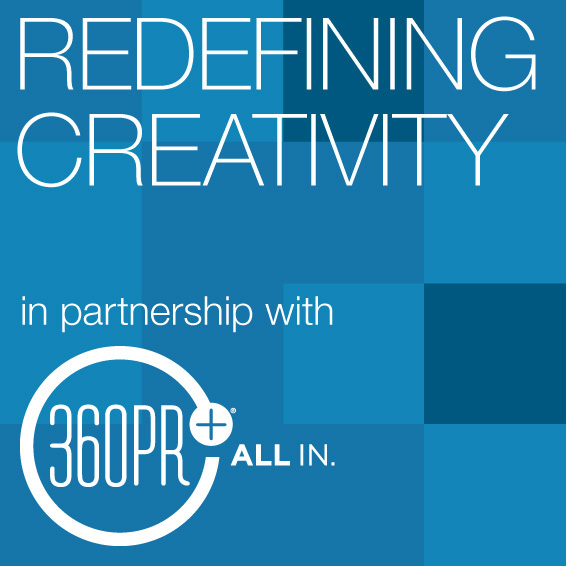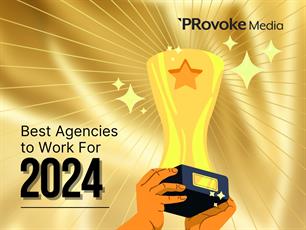Mark Henricks 16 Sep 2019 // 6:55PM GMT

Brands today seek the clutter-cutting and image-boosting power of creative campaigns. And agencies are responding with innovative combinations of messages and media that take public relations into new realms of influence.
Powering the push to greater heights of creativity is brands’ need for effective responses to business challenges, says Matthew Lenig, senior vice president and creative director at 306PR+
“Clients are looking for solutions these days,” he says. “They’re looking for creative and inventive business strategies.”
Combining high levels of creativity with rigorous analysis was standard operating procedure for Lenig earlier in his career when he worked in advertising. Now he sees it coming to PR. “More and more PR houses are approaching creativity similarly to how traditional ad agencies are doing it, where proper research is driving the creative brief,” he says.
One example of this is 360PR+’s “Divorce Stories” campaign for TIAA, a financial services firm that is unusual because women represent a majority of its clients. Research revealed that hardly any firms offered advice and education about divorce-related finance.
The content campaign that came out of this received a Gold SABRE award for digital campaigns in 2018. Content on topics such as “Who keeps the house in a divorce?” and “Am I responsible for my spouse’s credit card debt?” also proved to be useful and practical for TIAA clients. “That was a very empowering campaign for an audience that has been largely ignored for years,” Lenig says.
Creativity to Clients
360PR+’s “Divorce Stories” campaign illustrates the way research, analysis and creativity can combine in a studied way. Still, when asked how they value creativity, clients tend to mention ad hoc innovations ginned up practically on the spur of the moment.
At Patagonia, Director of Global Communications and Public Relations Corley Kenna recalls how in the days after the U.S. Presidential election in November 2016, the outdoors company cast about for ways to engage on Black Friday with consumers unsettled by the prospect of a less environmentally-minded administration.
“We decided to go all in for the planet,” Kenna says. “Every day we give “1% for the Planet” through our foundation. We decided on that Friday we’d give 100% for the planet. Every dollar we made that day we gave to environmental non-profits.”
The edgy initiative generated $10 million in Black Friday sales, several times the forecast amount. A torrent of positive news coverage also resulted.
At Southwest Airlines, Senior Manager of Public Relations Chris Mainz cites the early 2019 #rescuethedress initiative as an example of the kind of creativity they value. The campaign began when a customer contacted them about a friend who flew to Costa Rica for a wedding, forgetting her bridesmaid dress at home in Houston.
Southwest mobilized to get the dress to the bridesmaid before the wedding, which was imminent. The saga of the dress’s retrieval, transport and delivery was recounted step-by-step on Twitter. The hashtag attracted thousands of avid followers, Mainz says.
“We had people tuning into this in real-time,” Mainz says. “They were following the story almost like you would a TV show.”
These internal PR executives at Patagonia and Southwest both say that thinking outside the box is baked into their organizations. “Southwest has always been a company that places tremendous value on public relations,” Mainz says. “It’s also a company that’s allowed our employees, specifically here in communications, to be ourselves and encourage that creativity.”
Patagonia’s Kenna says, “Being creative and being curious are two of the more important qualities that strong communications professionals should have. I think creativity and curiosity really help propel messages.”
How Agencies Approach Creativity
For Lenig, public relations is the natural place for creativity to flourish in the 21st Century media environment of bubbling social media innovation. “I think PR firms are better equipped to perform messaging tasks in those arenas than traditional advertising agencies,” Lenig says.
“PR firms are working closely with their clients day in and day out on messages going out to their clients,” he continues. “There’s definitely more contact day to day, so PR firms are closer to the message that’s currently being put out there.”
In addition to having closer, more frequent contact with clients, PR professionals are better positioned to make use of the explosion in new media channels, Lenig says. “PR firms are more free to think about ideas with a media-agnostic approach,” he explains. “There’s no need to immediately leap out to a 30-second spot or a digital campaign. There’s more freedom to think about the idea and what it wants to be.”
Public relations also seems well-suited to purpose marketing. An example is the “Touch of Care” campaign by P&G’s Vicks brand telling the story of an Indian transgender rights activist’s struggle to gain respect and legitimacy. The campaign won numerous awards, including a Gold Sabre award, and was one of the most-viewed films on YouTube.
At the same time, the PR initiatives most awarded for creativity also are squarely aimed at addressing business needs. “Fearless Girl,” the campaign that took top honors at the 2018 Global SABRE Awards, captured global attention when it installed a bronze sculpture of a small girl challenging the iconic bull on New York’s Wall Street.
“Fearless Girl” directly addressed the investment firm client’s objective of calling attention to its efforts to convince its clients to add women members to their corporate boards. That, in turn, was based on research showing more gender-diverse firms generate higher profits.
This affinity for propose-driven business strategy may, as much as anything, be what encourages greater creativity in PR. “Even Wall Street blue chip companies are saying that purpose is just as important as revenue and earnings,” Lenig says. “Purpose is as important as the business practice. And this is at the center of everything we’re saying with our clients.”
Whether the driving force is new media, purpose or a simple search for new solutions, creativity seems destined to play a bigger role in PR. “I think creativity is on an increasing slant toward more and importance in general,” Lenig says. “Creativity is going to reign supreme.”
This article is the first in a series exploring the topic of creativity in partnership with 360PR+. You can read more from the series here.


































.jpg)


















